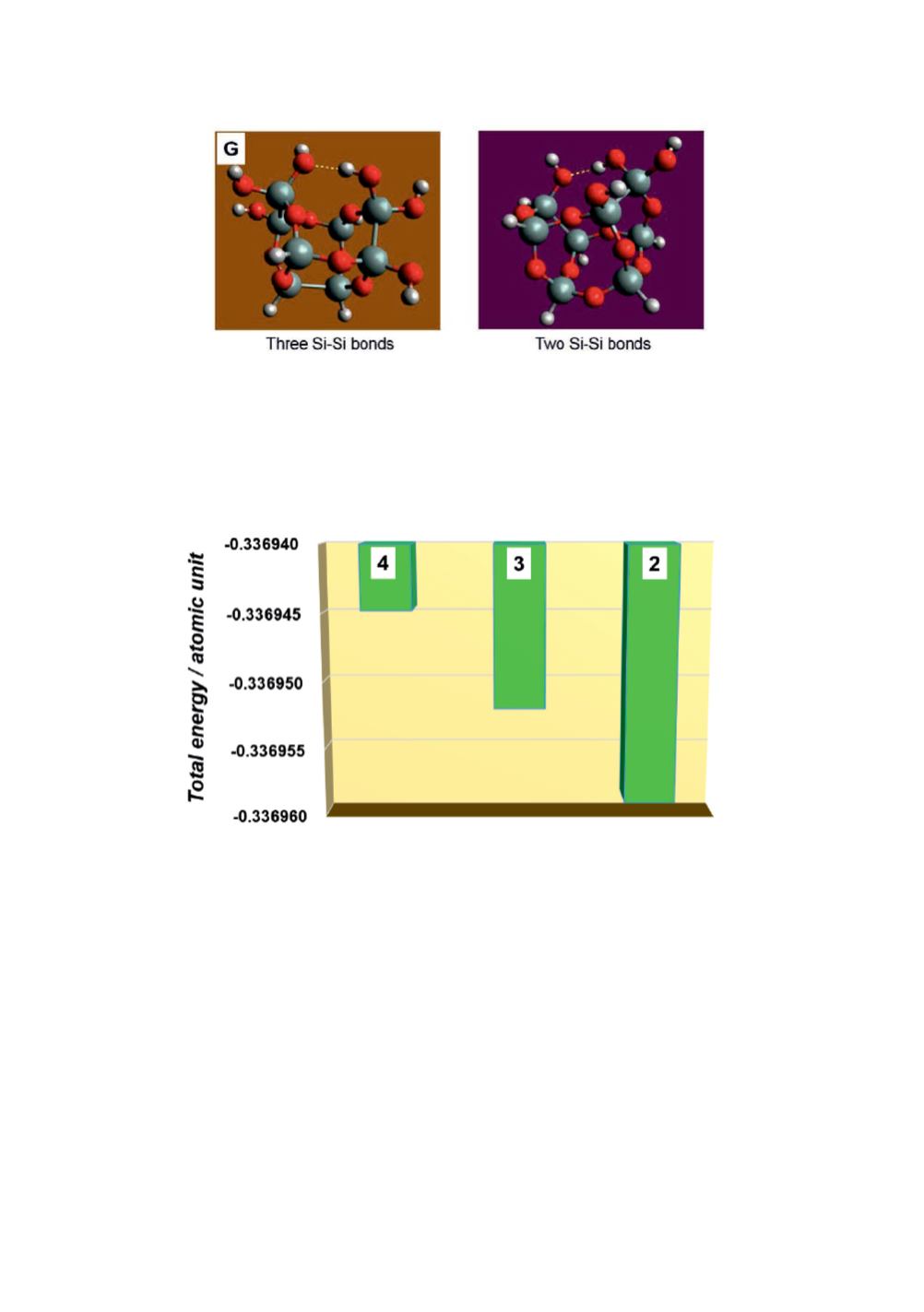

Figure 6
: Optimized partial cage structures modified by reducing the number of Si-Si bonds.
The optimization level is MP2/6-31G*.
Figure 7 shows the dependency of total electronic energy plus nuclear repulsion on the
number of Si-Si bonds. Model A is used to represent the four Si-Si bond model in the
figure.
The least stability for the four Si-Si bond model may suggest the largest energy release
by their oxidation.
Figure 7
: Impact of the number of the Si-Si bonds on the total electronic energy plus nuclear
repulsive energies. The number of the Si-Si bonds is indicated in each bar.
Vibrational analysis
The vibrational analysis was conducted for the seven models of A ~ G under harmonic
oscillator approximation. This approximation has been widely used as a reliable and
reasonably accurate representation of actual molecular vibrations except highly excited
conditions.
The anharmonic relaxation effect was corrected by multiplying scale factor to the
calculated frequency values. The scaling factor of 0.9427 obtained for MP2/6-31G*
level calculation [12] was chosen for this study.
Each model molecule consisting of 32 atoms has 96 degrees of freedom and 90 of them
correspond to molecular deformation. The vibrational modes are orthogonal each other.
The remaining six degrees of freedom are allocated to three translational modes and the
other three rotational modes. Those six modes were not evaluated in this study.
194


















